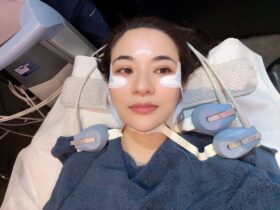We speak with dental care expert Dr Helena Lee for tips and tricks to enhance your smile
By Cheryl Chia
We’ve been told to death on the proper way to brush our teeth and prevent bad breath, since we were children in primary school. But how many of us bother to actually remember beyond merely brushing our teeth twice a day?
There is more to cleaning your teeth than giving it the old one-two brushstrokes every day. Dr Helena Lee, a Dental Specialist in Periodontics with Specialist Dental Group says, “Most people only brush their teeth but skip flossing. Flossing removes food particles and plaque from between teeth. Any leftover particles not picked up by a toothbrush in these difficult to access areas between teeth can cause decay and gum disease.”
Dr Lee adds, “Some also have a misconception that a hard toothbrush is best, when in actual fact it is too abrasive for the gums.”
Plaque is an accumulation of bacteria that is always present in the mouth, which can be kept at bay with frequent brushing and flossing. Dr Lee warns, “Bleeding gums (during brushing) is a sign of gum disease. Relook into your dental care and visit your dental specialist.”
The Singapore Dental Health Foundation also extols the benefits of regular dental check-ups, as most dental problems progress at a slow pace and they are usually asymptomatic. Thus, routine dental visits might help to pre-empt or treat existing conditions quickly.
Dr Lee, who has also worked on the Smile More Singapore campaign for Oral-B, also encourages using an appropriate-sized toothbrush for your mouth as “too big a brush means the back-most teeth are missed out and not cleaned properly”. She also suggests a softer-bristled toothbrush gentle enough for the gums and for cleaning teeth properly.
If you find flossing too much of a hassle, make it easier by investing in a floss-holder to reach all your teeth easily. People with braces should use the specially-shaped brushes for braces.
“Simply look into the mirror, work the brush both above and below the orthodontic brackets. Then, use inter-dental brushes to reach between the brackets,” says Dr Lee.
She also advises rinsing your mouth with water after drinking strong drinks such as tea, coffee or wine to prevent extrinsic discolouration. The Singapore Dental Health Foundation also says that a greyish-coloured tooth might be a result of deeper problems such as a “dead tooth” or decay. Intrinsic discolouration can be treated with either a root canal, in the case of a dead tooth, or internal bleaching.
A growing wisdom tooth can be a pain in more than a physical sense, and it requires proper care. Dr Lee says, “Apart from brushing well, use an antiseptic mouth rinse. More importantly, see a dental surgeon for X-rays, because a partially-impacted wisdom tooth should be removed before the infection becomes an emergency.”
Dr Helena Lee is a Dental Specialist in Periodontics with Specialist Dental Group, Singapore. She is also an Adjunct Lecturer with the National University of Singapore.
For more information, visit www.specialistdentalgroup.com
ADVERTISEMENTS










